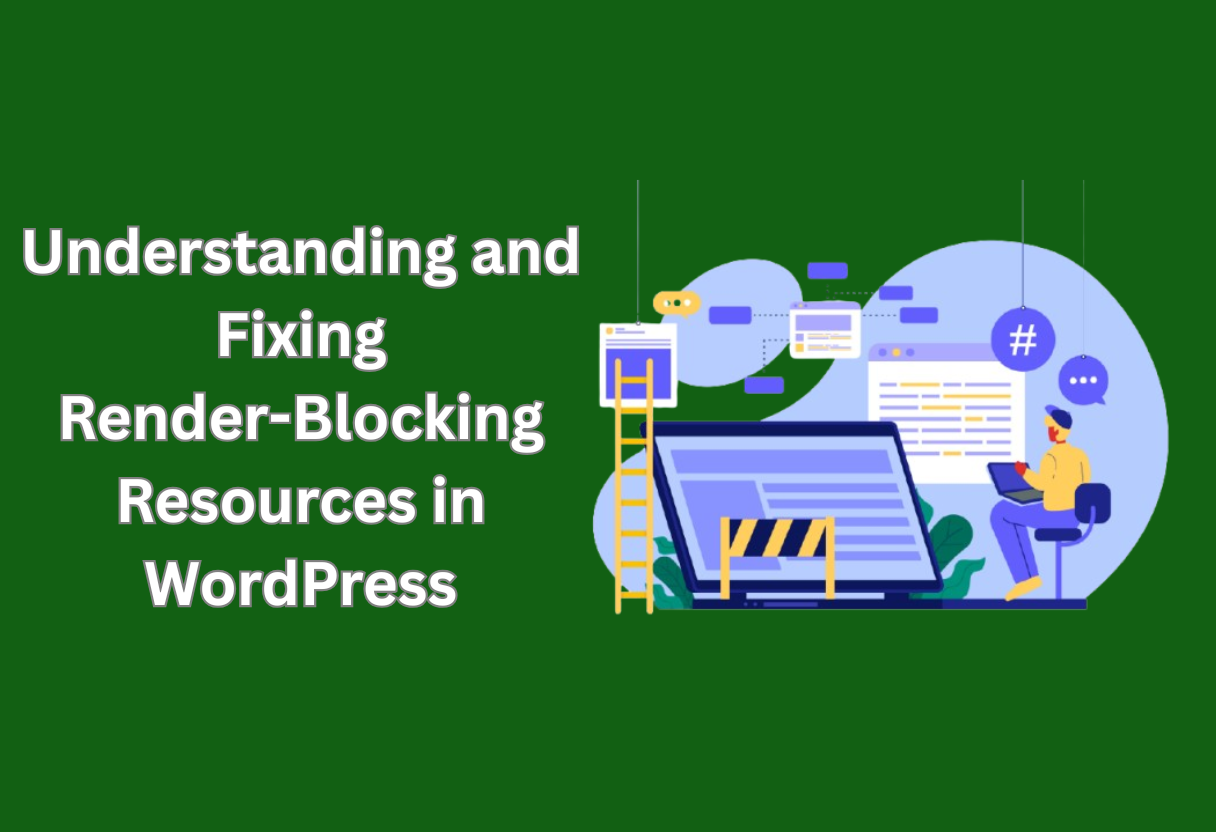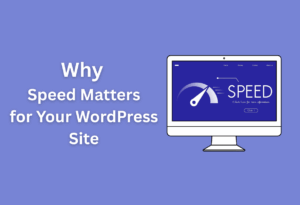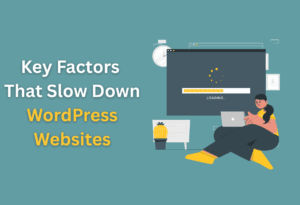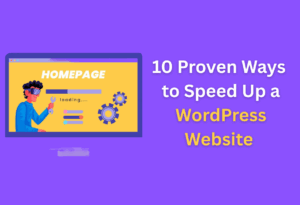Many WordPress users face challenges with render-blocking resources that can significantly impact website performance. These resources, such as scripts and stylesheets, can delay the rendering of your site’s content, leading to a poor user experience. In this post, you will learn how to identify and fix these issues effectively. By understanding what render-blocking resources are and how they affect your site, you can improve loading speeds and enhance overall performance, making your website more user-friendly and efficient.
What are Render-Blocking Resources?
A render-blocking resource is any file that prevents a web browser from rendering a webpage until the resource is fully loaded. These resources can significantly delay the time it takes for visitors to see your content, impacting both user experience and search engine rankings.
Definition of Render-Blocking Resources
By definition, render-blocking resources are typically CSS and JavaScript files that the browser must download and process before it can display the webpage. When a browser encounters these resources, it pauses rendering the page until they are fully received.
How Render-Blocking Affects Page Performance
At the heart of page performance issues are render-blocking resources that delay the loading of visual content. This effect can lead to longer loading times, causing visitors to leave your site before it even fully loads, thus increasing your bounce rate.
Also, the impact of render-blocking resources extends beyond just loading times. Websites that do not load quickly often experience lower user satisfaction and can rank lower in search engine results. Optimizing your resources is beneficial not only for user engagement but also for your site’s visibility online.
Common Types of Render-Blocking Resources
- CSS files
- JavaScript files
- Web fonts
- Third-party plugins
- External stylesheets
Thou may find that these resources can significantly delay your site’s rendering, affecting overall loading time and user experience.
| Type of Resource | Impact on Rendering |
|---|---|
| CSS files | Essential for styling; delays rendering without it |
| JavaScript files | Can block rendering until executed |
| Web fonts | May cause layout shifts if not handled properly |
| Third-party plugins | Often pull resources, causing delays |
| External stylesheets | Need to be loaded before the page can be rendered |
Render-blocking resources can require thoughtful optimization strategies. You may need to adjust how these resources are loaded to enhance page performance and user experience.
- Minimize CSS and JavaScript files
- Defer loading for non-critical scripts
- Inline critical CSS for above-the-fold content
- Use async attributes for JavaScript
- Reduce reliance on heavy third-party scripts
Thou should focus on understanding the impact of these resources to effectively optimize performance.
Identifying Render-Blocking Resources in WordPress
Now that you understand the importance of address render-blocking resources, the next step is to identify these problematic elements within your WordPress site.
Tools for Analysis (e.g., Google PageSpeed Insights)
An effective way to identify render-blocking resources is by using tools like Google PageSpeed Insights. This tool provides comprehensive reports on your site’s performance, helping you pinpoint scripts and styles that slow down rendering. By inputting your URL, you can receive insights and recommendations tailored to your WordPress site.
Understanding the Critical Rendering Path
Identifying the Critical Rendering Path involves understanding how browsers process web pages, prioritizing visible content for quickest display. This path outlines the sequence of steps taken from receiving the HTML document to painting pixels on your screen. By focusing on this path, you can see which resources are important for blocking rendering and which can be deferred.
In addition, optimizing the Critical Rendering Path is vital. This optimization includes minimizing the number of render-blocking resources and loading them efficiently. By doing this, you enhance the user experience by ensuring that content appears quickly, which can significantly improve your site’s perceived performance.
Analyzing Fallbacks and Alternatives
Analyzing fallbacks and alternatives means looking at how resources are handled when certain scripts or styles are not immediately available. You should consider if there are alternative ways to load content or if some resources can be excluded altogether without compromising functionality.
Understanding the role of fallbacks and alternatives is important for ensuring your site remains functional and visually appealing, even when resources are delayed. This strategy may involve employing async or defer attributes for JavaScript files or using fallback styles to provide a seamless experience for your users. By implementing these techniques, you can prevent render-blocking scenarios that may otherwise hamper performance.
Causes of Render-Blocking Issues in WordPress
After exploring the importance of addressing render-blocking resources, it’s imperative to understand what causes these issues in WordPress. Several factors contribute to slow loading times, and identifying them will help you implement the right solutions for your site.
Improperly Loaded CSS Files
Render-blocking CSS files can prevent your website from displaying correctly until all styles are fully loaded. Often, CSS files are loaded in the head of your HTML document, which means your content will not render until all styles are applied, leading to a slower perceived load time for your visitors.
JavaScript Dependencies and Ordering
Behind every smooth user experience is a well-managed order of JavaScript execution. If scripts are not loaded in the right sequence, it can delay rendering and interfere with page functionality. Ensuring proper ordering allows the browser to execute JavaScript without impacting the display of your content.
And when you have multiple JavaScript files, managing dependencies becomes even more important. If a script depends on another one, loading them out of order will not only slow down rendering but could create errors on your site. Making sure that scripts are loaded only when necessary and in the correct order will enhance your website’s performance significantly.
Theme and Plugin Conflicts
Between various themes and plugins, loading issues can arise if they are not optimized for performance. Some themes and plugins might add unnecessary scripts or styles, leading to additional render-blocking resources that hinder your site’s speed.
Dependencies between different themes and plugins can further complicate the situation. When plugins rely on styles and scripts from each other, it can create a chain reaction of delays. Review your active themes and plugins regularly to ensure they work harmoniously and don’t contribute to slow loading times on your site.
Strategies for Fixing Render-Blocking Resources
Many website owners struggle with optimizing their sites due to render-blocking resources. Fortunately, various strategies exist to help you overcome these challenges. Implementing these solutions can significantly improve your site’s loading speed and overall performance.
Deferring JavaScript Loading
Behind every optimized website is a thoughtful approach to JavaScript loading. By deferring your JavaScript files, you instruct the browser to load these resources only when they are needed, rather than during the initial rendering of your page. This can help you minimize the time it takes for content to become visible to users.
Asynchronous Script Loading Techniques
To further enhance your site’s performance, consider implementing asynchronous loading techniques for your scripts. This method allows scripts to load simultaneously with other resources without blocking the rendering of the page.
The primary advantage of asynchronous script loading is that it prevents JavaScript files from holding up other content. When you leverage attributes like “async” or “defer,” the browser can execute scripts as they are downloaded, enhancing the user experience by delivering an interactive interface more quickly.
Inline Critical CSS
An effective way to address render-blocking resources is by using inline critical CSS. By embedding imperative CSS rules within the HTML document, you reduce the need for external stylesheets to block rendering during page load. This allows your webpage to display quickly and efficiently.
Inline critical CSS focuses on the styles necessary for the above-the-fold content, enabling the rest of your CSS to load in the background. By strategically managing your CSS, you create a snappier experience for your visitors while ensuring that the design remains intact as additional styles are applied.
Minifying CSS and JavaScript Files
Resources such as CSS and JavaScript files can contain unnecessary whitespace and comments that slow down your page load. By minifying these files, you strip away redundancies, making them smaller and faster to load, thus optimizing your site’s performance.
Understanding the minification process is vital for enhancing your website’s speed. Tools and plugins are available that can automate this process, allowing you to combine and compress your CSS and JavaScript files efficiently, ensuring that your page loads quickly without sacrificing functionality.
Leveraging Caching and Optimization Plugins
Unlike standard practices, leveraging caching and optimization plugins can significantly enhance your website’s performance by reducing the load time of render-blocking resources. These plugins work to streamline the way your WordPress site delivers content to users, resulting in an improved overall user experience.
Recommended Caching Plugins for WordPress
Above all, plugins like WP Super Cache, W3 Total Cache, and WP Rocket are commonly recommended for WordPress users. Each of these tools effectively caches your pages, allowing for faster loading times by serving static files instead of querying the database for dynamic content with every request.
Plugin Configuration for Optimizing Render-Blocking Resources
Optimization begins once you’ve selected the right caching plugin. You need to configure settings such as minifying CSS and JavaScript files and enabling lazy loading for images. These adjustments will help streamline the delivery of your resources and mitigate render-blocking issues.
It is important to take your time during the configuration process. Each caching plugin comes with various options that may initially seem overwhelming. Focus on enabling features that compress files and defer loading of non-necessary scripts. This will aid in optimizing how quickly your pages render for visitors.
Evaluating Performance Gains Post-Implementation
Between the implementation of caching solutions and the actual testing phase, you will want to monitor your site’s performance meticulously. Use tools like Google PageSpeed Insights or GTmetrix to gauge improvements in load times and overall user experience, ensuring that your optimization efforts yield positive results.
WordPress performance ratings are necessary, as they provide insight into how well your optimizations are working. After making changes, consistently use performance testing tools to compare load times against your benchmarks. This practice ensures you are making informed decisions and adjustments as needed for ongoing improvement.
Best Practices for Future Web Development
To ensure your WordPress site continually performs well and minimizes render-blocking resources, there are several best practices you should incorporate into your future web development projects.
Designing Lightweight Themes
Above all, focus on designing lightweight themes that prioritize speed. A minimalistic approach with optimized code helps minimize the load on your resources, leading to quicker render times. Choose a clean layout that avoids excessive animations and heavy graphics to enhance performance.
Choosing Performance-Optimized Plugins
Designing a website involves selecting the right tools, so choose performance-optimized plugins that are built for speed and efficiency. Many plugins can add substantial load time, so it’s important to look for those that are well-coded and specifically designed to minimize performance impact.
Performance-optimized plugins also reduce the likelihood of conflicts that can further slow down your site. Always verify user reviews and check update history to ensure the plugins you select are maintained and have a strong reputation for performance in the WordPress community.
Regular Performance Testing and Updates
Performance should be an ongoing consideration, so conduct regular performance testing and keep your site updated. Routine checks allow you to identify issues early, letting you address them before they escalate and affect the user experience.
Even small changes can improve your website’s performance significantly. By staying proactive with updates and testing, you not only fix potential problems but also keep your site aligned with the best practices and features that enhance speed and user engagement.
To wrap up
The understanding and fixing of render-blocking resources in your WordPress site can significantly enhance your site’s performance and user experience. By identifying these resources and optimizing them, you can reduce loading times and improve search engine rankings. Utilize tools and plugins designed for this purpose, and consider implementing strategies like lazy loading or deferring scripts. By taking these steps, you’ll ensure that your site runs more efficiently, ultimately benefiting both you and your visitors.





